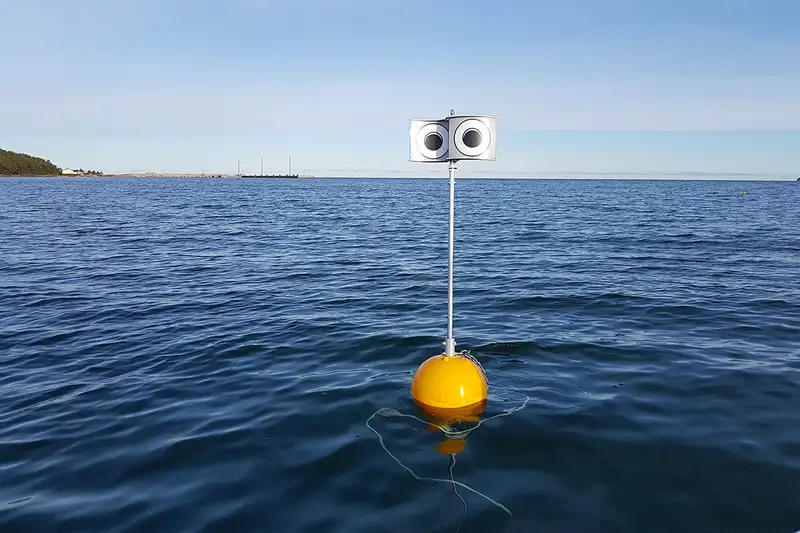
The Looming-Eyes Buoy deters seaducks, photograph by Andres Kalamees
Yann Rouxel (BirdLife International Marine Programme, c/o the Royal Society for the Protection of Birds Scotland, Glasgow, UK) and colleagues have published open access in the journal Royal Society Open Access on developing a novel deterrent for seabirds in gill-net fisheries.
The paper’s abstract follows:
“Bycatch of seabirds in gillnet fisheries is a global conservation issue with an estimated 400 000 seabirds killed each year. To date, no underwater deterrents trialled have consistently reduced seabird bycatch across operational fisheries. Using a combination of insights from land-based strategies, seabirds' diving behaviours and their cognitive abilities, we developed a floating device exploring the effect of large eyespots and looming movement to prevent vulnerable seabirds from diving into gillnets. Here, we tested whether this novel above-water device called ‘Looming eyes buoy' (LEB) would consistently deter vulnerable seaducks from a focal area. We counted the number of birds present in areas with and without LEBs in a controlled experimental setting. We show that long-tailed duck Clangula hyemalis abundance declined by approximately 20–30% within a 50 m radius of the LEB and that the presence of LEBs was the most important variable explaining this decline. We found no evidence for a memory effect on long-tailed ducks but found some habituation to the LEB within the time frame of the project (62 days). While further research is needed, our preliminary trials indicate that above-water visual devices could potentially contribute to reduce seabird bycatch if appropriately deployed in coordination with other management measures.”
Read popular counts here and here.
Reference:
Rouxel, Y., Crawford, R., Cleasby, I.R., Kibel, P., Owen, E., Volke, V., Schnell, A.K. & Oppel, S. 2021. Buoys with looming eyes deter seaducks and could potentially reduce seabird bycatch in gillnets. Royal Society Open Access doi.org/10.1098/rsos.210225.
John Cooper, ACAP Information Officer, 12 May 2021

 English
English  Français
Français  Español
Español